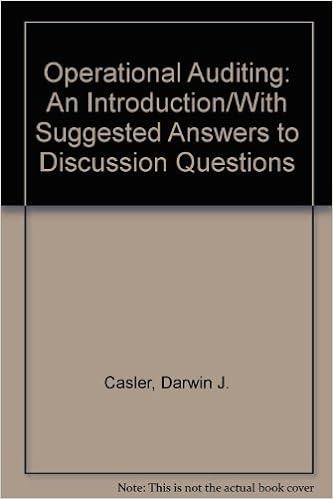Answered step by step
Verified Expert Solution
Question
1 Approved Answer
THIS IS THE QUESTION I NEED ANSWERED, CALCULATIONS PROVIDED BELOW: From your analysis, summarize the major strenths and weaknesses comparing *scroll to the right to
| |||||||||||||||||||||||
| Current Ratio | 2011 | 2010 | |||||||||||||||||||||
| Current Assets / Current Liabilities | 8.54 | (478250/56000) | 6.86 | (329150/48000) | |||||||||||||||||||
| Strengths and Weaknesses | |||||||||||||||||||||||
| Current Ratio is calculated by dividing the company's total current assets by the company's total current liabilities. This ratio is a widely used measure of a firm's ability to meet it's current obligations & to have funds available for use in daily operations. | |||||||||||||||||||||||
| A generally accepted rule of thumb is that the current ratio should be 2:1, indicating that a company should maintain twice the dollar amount of current assets as was needed to satisfy it's current liabilities. | |||||||||||||||||||||||
| 2011's current ratio was better than 2010 | |||||||||||||||||||||||
| PART 6 B. | 2011 | 2010 | |||||||||||||||||||||
| Quick Ratio | |||||||||||||||||||||||
| Cash & cash equivalents + short term investments + Accts Recievable) / | 3.15 | (176200+238850)/56000 | 5.94 | (253100+31850)/48000 | |||||||||||||||||||
| Current Liabilities | |||||||||||||||||||||||
| Strengths and Weaknesses | |||||||||||||||||||||||
| Quick ratio reveals the relationship between the company's Liquid Assets and it's Current Liabilities. It gives a more accurate picture of a company's ability to meet current obligations since the ratio ignores potentially illiquid inventory and prepaid expenses. | |||||||||||||||||||||||
| The higher the ratio, the the more financially secure a company is in the short term. 2010 has the better ratio | |||||||||||||||||||||||
| PART 6 C. | 2011 | 2010 | |||||||||||||||||||||
| Rate of Return on Total Assets | 0.026 | (27100/1049800) | 0.073 | (70100/963700) | |||||||||||||||||||
| Net Income / Average Total Assets | |||||||||||||||||||||||
| Strengths and Weaknesses | |||||||||||||||||||||||
| The rate of return on total assets reveals the rate of profit earned per dollar of assets under a firm's control. | |||||||||||||||||||||||
| Both 2011 and 2010 have poor ratios, but 2010 is slightly better. | |||||||||||||||||||||||
| PART 6 D. | |||||||||||||||||||||||
| Rate of Return on Common Stockholder's Equity | 2011 | 2010 | |||||||||||||||||||||
| (Net Income - Preferred Stock Dividends) / Average common stockholders equity | |||||||||||||||||||||||
| Strengths and Weaknesses | |||||||||||||||||||||||
| The return on common stockholder's equity measures the profitability of the ownership interest held by a company's common stockholders. The ratio shows the percentage of income available to common stockholders- that is, net income less any preferred stock dividends - for each dollar of common stockholder equity invested in a business. | |||||||||||||||||||||||
| PART 6 E. | 2011 | 2010 | |||||||||||||||||||||
| Earnings Per Share | |||||||||||||||||||||||
| (net income-preferred dividends) / outstanding common shares | (27100-0) / | ||||||||||||||||||||||
| Strengths and Weaknesses | |||||||||||||||||||||||
| PART 6 F. | 2011 | 2010 | |||||||||||||||||||||
| Accounts Receivable Turnover | |||||||||||||||||||||||
| Net Sales / Average Accts Recievable (Net) | 1.92 | (260000/135350) | 10.5 | (521000/49600) | |||||||||||||||||||
| Strengths and Weaknesses | |||||||||||||||||||||||
| The Accounts Recievable Turnover measures the ability to collect cash from customers. A higher turnover indicates that the company is converting their recievables at a faster rate. | |||||||||||||||||||||||
| 2010 is much higher than 2011. | |||||||||||||||||||||||
| 2011 | 2010 | ||||||||||||||||||||||
| Average Collection Period | 190.01 | (365/1.921) | 34.76 | (365/10.50) | |||||||||||||||||||
| 365 / Accts Recievable Turnover (Net) | |||||||||||||||||||||||
| Strengths and Weaknesses | |||||||||||||||||||||||
| The average collection period indicates how many days remain in accounts receivable. The lower the # of days, the quicker you are converting the recievables into cash. 2010 had the better average collection period. | |||||||||||||||||||||||
Step by Step Solution
There are 3 Steps involved in it
Step: 1

Get Instant Access to Expert-Tailored Solutions
See step-by-step solutions with expert insights and AI powered tools for academic success
Step: 2

Step: 3

Ace Your Homework with AI
Get the answers you need in no time with our AI-driven, step-by-step assistance
Get Started


